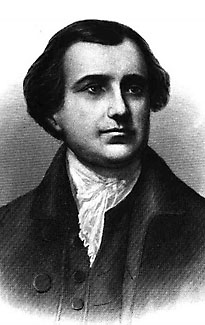Virginia Plan and New Jersey Plan
Madison willingly went along with Edmund Randolph’s Virginia Plan, which called for the creation of a bicameral, or two-house, national legislature. The House of Representatives was elected by the people. Senators were nominated by state legislators and then elected by delegates to the House. The states would be represented in both houses proportionally. For example, a state with a large population would have more representatives voting than a state with a smaller population. In addition to the creation of the two-house legislature, the Virginia Plan also called for:
- Authority to tax and regulate foreign and interstate commerce.
- Power to veto, or prohibit an act from becoming a law.
- Creation of a Judicial Branch and an Executive Branch.
There was opposition to the Virginia Plan, which mostly came from smaller states that felt they would not be represented as well as other states. Thus, William Patterson introduced the New Jersey Plan, which called for a unicameral, or one-house, legislature with equal representation so all states had the same power. In addition, the plan allowed for:
- Giving Congress the right to tax and regulate foreign and interstate commerce.
- Creating an Executive Branch and a Judicial Branch.